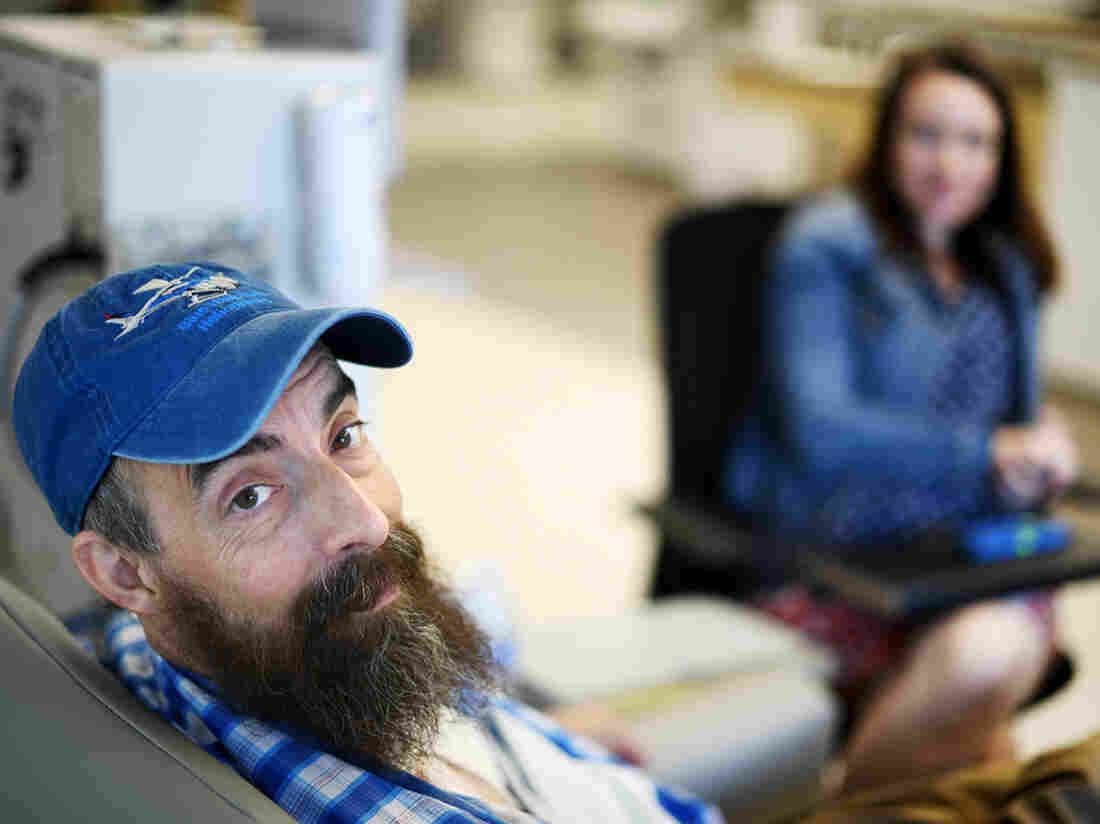The Latest From This Year’s Tour De France
NPR’s Ari Shapiro talks with Damian McCall of the Agence France Presse to give us the latest developments from the Tour de France after a stage of the race was cancelled due to extreme weather.
ARI SHAPIRO, HOST:
Cyclists in this year’s Tour de France have faced some of the hottest temperatures in France’s history. Then, today, it was snow and hail that led officials to stop the race midway through. That decision meant a new cyclist is now wearing the yellow jersey just two days before the race wraps up. Agence France Presse’s Damian McCall is in the Alps covering the race.
Welcome back to the program.
DAMIAN MCCALL: Hello, everybody. Here from the Alps. You’re quite right. The heat wave yesterday, when it was about 100 Fahrenheit, made way to hail, rain and floods. It’s pretty cold here. It must be about 55 degrees Fahrenheit.
SHAPIRO: And what impact did that have on the riders?
MCCALL: Well, it had a massive impact on the writers because a key stage of the race, about – let’s say about 5 kilometers after the young Colombian Egan Bernal launched his astonishing attack, there was a sudden hailstorm on the other side of the mountain. So there was two riders racing downhill at 90 kilometers an hour. That’s very fast, indeed, on racing bicycles.
SHAPIRO: And that’s dangerous in good weather, but when you’ve got ice and snow on the road, that seems extremely treacherous.
MCCALL: Yeah. There’s been a kind of slide. You know, we’re above the tree lines, so you’ve got this sort of gray rock on the mountains. Imagine the kind of shale on the mountainsides that sort of poured down onto the roads. So for about 100 meters of hailstone and shale blocking the road, it was impassable. There was no way they could have done anything with it. The race organizers scrambled to send the motorbike after the two leaders and tell them to stop.
SHAPIRO: Just to stop in the middle of the race? Wow.
MCCALL: Yeah. So what they did was they neutralized the race, and they took the times at the crest of the summit that they’d just crossed. And the riders didn’t know what was going on. And Bernal and Yates refused to stop initially. They said – they’re two young riders saying, no, no, no. No way, not now. We’re not stopping now (laughter). And they said, it’s OK, mate, don’t worry. You’re going to have the yellow jersey because we’re taking the times from the final crest.
So it was very peculiar. It’s unprecedented in the Tour de France. So we do now have a new yellow jersey. Julian Alaphilippe’s 14-stage tenure is done and dusted. France’s dreams are in tatters (ph).
SHAPIRO: And do you think this is going to change the final calculation of who wins?
MCCALL: Absolutely. So whoever comes out on top tomorrow night will be the winner. And right now Bernal has a 46-seconds lead. If – there may be one last twist in the tale. You never can tell with sport, sport being sport being sport. But my money, firmly – you know, mortgage your house; put it on, again, Bernal.
SHAPIRO: For a long time in this race, it looked like it was going to be the first time in years a Frenchman won. Now that that Frenchman no longer looks to be the favorite, are French people feeling a little bit crushed?
MCCALL: They will be feeling crushed because what happened today was really heartbreaking for them. Before Alaphilippe snapped on that climb, the other French rider they thought would be in with a chance if Alaphilippe snapped pulled out of the race with a torn muscle in his thigh. You know, he was actually in tears on the bicycle. And these guys are some of the toughest athletes you can possibly imagine. For him to clamber into the back of a team car, absolutely broken, really hurt a lot of French fans. And so, yeah, their dreams are gone. There’s no Frenchman in the reckoning.
SHAPIRO: Damian McCall is a reporter with Agence France Presse covering the Tour de France.
Thank you so much.
MCCALL: Thank you and bye-bye.
Copyright © 2019 NPR. All rights reserved. Visit our website terms of use and permissions pages at www.npr.org for further information.
NPR transcripts are created on a rush deadline by Verb8tm, Inc., an NPR contractor, and produced using a proprietary transcription process developed with NPR. This text may not be in its final form and may be updated or revised in the future. Accuracy and availability may vary. The authoritative record of NPR’s programming is the audio record.



